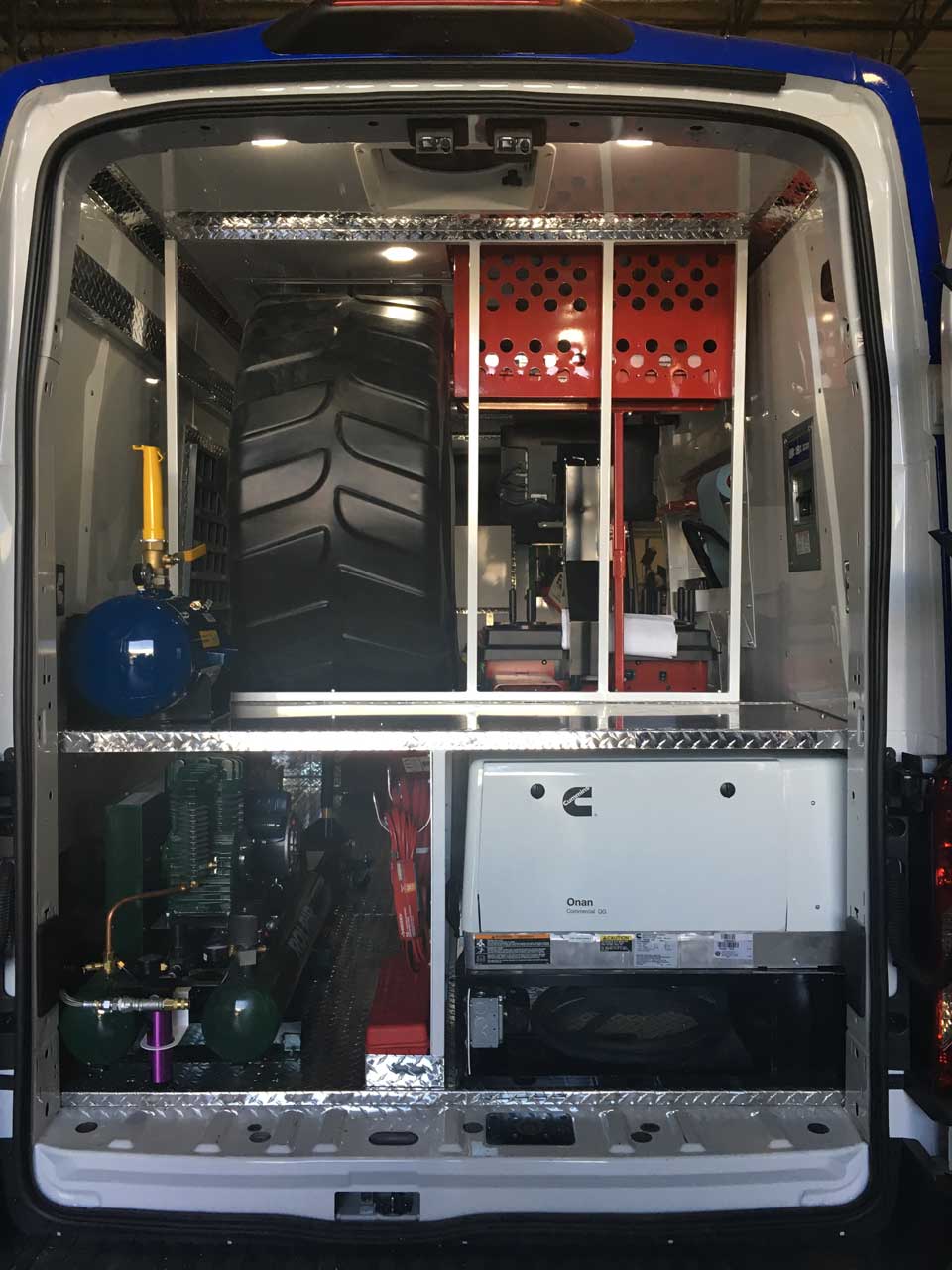Tire Service: Proven Techniques for Optimum Tire Maintenance and Care
From guaranteeing correct tire pressure to normal rotation and placement, there are proven techniques that can considerably prolong the life-span of your tires and improve general driving experience. Allow's dig into the globe of tire service and discover the tricks to keeping your tires in excellent form for the long haul - Mobile Tire Service Las Vegas.
Significance of Tire Pressure
Sufficient tire pressure promotes better fuel efficiency, as under-inflated tires can lead to boosted rolling resistance, triggering the engine to work more challenging and consume even more fuel. Appropriate tire stress guarantees also tread wear, enhancing tire durability and saving cash in the lengthy run by delaying the need for early replacements. Routinely checking and adjusting tire pressure, particularly before long trips, is an easy yet efficient way to boost car performance, prolong tire life expectancy, and focus on safety and security on the road.
Tire Turning Standards
When taking into consideration tire rotation guidelines, it is important to understand the significance of this upkeep job in maximizing tire life expectancy and keeping ideal vehicle performance. Tire rotation entails altering the placement of each tire on a lorry to make certain also step wear. Front tires have a tendency to put on faster than rear tires due to guiding pressures, making regular rotation important for well balanced wear patterns. The suggested rotation pattern varies relying on whether a lorry is front-wheel, rear-wheel, all-wheel, or four-wheel drive. Normally, tires must be revolved every 5,000 to 7,500 miles, or as advised in the automobile handbook. Overlooking tire turning can bring about unequal wear, impacting handling, grip, and possibly compromising car safety and security. By sticking to appropriate turning guidelines, chauffeurs can expand the life of their tires, enhance gas efficiency, and improve general driving experience. Normal turning is a straightforward yet reliable maintenance practice that adds substantially to tire durability and vehicle performance.

Advantages of Wheel Positioning
Guaranteeing correct wheel positioning after tire turning is vital for keeping well balanced wear patterns and maximizing automobile performance. In addition, right wheel positioning aids to extend the life-span of your tires. Misaligned wheels can cause unequal tire wear, leading to early tire replacement and raised maintenance prices.

Tire Tread Depth Check
Carrying out a routine evaluation of tire tread depth is vital for keeping safe driving problems and lengthening the life expectancy of your tires. The step on your tires plays a vital role in giving traction, specifically in slippery or wet problems. To examine your tire walk deepness, you can use a step depth scale or the penny examination. The recommended tread his comment is here deepness goes to the very least 2/32 of an inch. If the tread depth is below this limit, it is time to change your tires to guarantee ideal efficiency and safety when driving. Irregular step wear can show issues with tire positioning, pressure, or suspension, highlighting the value of routine step deepness checks. Disregarding to keep an eye on and preserve correct tread deepness can cause minimized grip, longer stopping ranges, and a raised danger of hydroplaning. By including tire step depth checks right into your regular maintenance timetable, you can drive with self-confidence recognizing that your tires are in top condition.
Seasonal Tire Examination
A detailed analysis of tire problem tailored to specific climate condition is crucial for preserving optimum performance and security throughout the year. Seasonal tire assessment is an essential element of tire maintenance that makes sure tires prepare to face the challenges presented by different weather. To prepare for wintertime, it is necessary to inspect the tire pressure frequently as chilly temperature levels can trigger tire pressure to drop. Examining tire step depth is likewise vital to ensure appropriate traction on snow and ice-covered roadways. In addition, looking for indicators of wear and tear, such as fractures or bulges, recommended you read can assist protect against possible tire failings. As the seasons adjustment, it is very important to assess tire condition and make any necessary modifications to guarantee safe driving. By conducting routine seasonal tire inspections, chauffeurs can extend tire life-span, improve gas performance, and most significantly, guarantee a safe driving experience in differing climate conditions - Mobile Tire Replacement Las Vegas.
Final Thought
In conclusion, maintaining proper tire pressure, turning tires on a regular basis, aligning wheels correctly, keeping an eye on step deepness, and performing seasonal evaluations are crucial practices for optimum tire treatment. By adhering to these proven methods, motorists can ensure their tires last much longer, execute much better, and add to total car security. It is vital to prioritize tire upkeep to avoid accidents, improve fuel efficiency, and extend the lifespan of tires.
Sufficient tire pressure advertises much better fuel performance, as under-inflated tires can lead to boosted rolling resistance, causing the engine to work tougher and consume even more gas.When thinking about tire turning standards, it is necessary to recognize the value of this maintenance task in making best use check my site of tire life expectancy and maintaining optimum automobile performance. Seasonal tire assessment is a fundamental facet of tire maintenance that makes sure tires are all set to deal with the challenges postured by different climate conditions. By conducting routine seasonal tire inspections, drivers can lengthen tire lifespan, improve gas efficiency, and most importantly, ensure a safe driving experience in varying climate problems.
In verdict, preserving correct tire pressure, turning tires routinely, lining up wheels appropriately, keeping an eye on step deepness, and conducting seasonal inspections are essential techniques for optimal tire treatment.